EBR charges a service fee to manufacturers to produce ebike reviews and videos. It’s the same flat fee for each bike, and it helps us to keep the site going while limiting ad clutter. We appreciate the opportunity to serve you with our opinions and data but respect your right to know that we receive compensation :)
One of the oldest bicycle companies to form in America, Schwinn was launched way back in 1895, in Chicago Illinois, USA. These days, it’s part of a conglomerate called the Pacific Cycle group, and is expanding into electric bikes with products such as the sporty Schwinn Monroe 350. It has been interesting to watch Schwinn over the past decade, because they were one of the earliest entrants into the ebike space in 2007 with the World GSE model. Compared to that bike, the Monroe 350 is 25% less expensive, a lot lighter weight, and much more streamlined. It comes in three frame sizes and features color-matched fork, grips, saddle, and stylish deep dish rims. It would be perfect for city riding because its single-speed drivetrain won’t get bumped out of alignment easily at racks, the battery is removable for charging and safe keeping, and the display is compact and simple. You could lock this thing up to a bike rack and not have to worry so much about scratches and bumps… except for the power cable that protrudes from the right rear axle. For those who are truly concerned about damage or theft, consider the cheaper Schwinn Monroe 250 which isn’t as powerful, but costs $300 less and still looks great. Perhaps you’re the type of person who lives up stairs and wants to store the entire bike inside? That’s going to be easy with either of these e-bikes because of the wide open triangle and straight top tube. The bike is very well balanced front to rear and even has enough room inside the triangle for a bottle cage mount, which could also work for a folding lock, mini-pump, or other standard accessory. The trade-off here is that the frame feels more rigid and positions your body in a more forward leaning sporty angle… even mounting the frame requires a flexible sporty mindset compared to a mid-step or step-thru. This is especially true if you add a rear rack or fenders because you’ll have to swing your leg even higher. And, compromises were made to keep the price low. The Monroe 350 uses mechanical disc brakes vs. hydraulic activation with smaller 160 mm rotors vs. 180 and the motor is more efficient and smooth than truly powerful. It’s a big step up from the Monroe 250 (which uses a 250 watt motor) but you’ll still have to pedal along when climbing steep hills. There’s also no throttle here, which makes this a Class 1 product and allowable on more trails and paths but with only one gear and a cadence sensor, it requires a bit more pedal power and time to start.
Driving this bike is a very standard, highly recognized, 8Fun 350 watt internally geared hub motor. It’s compact, durable, and fairly quiet in the lower three assist levels. It blends in with the black spokes and deep dish rims visually and is not so heavy as to weigh down the back of the bike and impact riding or lifting of the frame. The motor responds quickly to pedal assist once the bike is moving a bit, because there is only one gear and the first pedal strokes can be slow and more difficult to make. Many of the early electric bicycles I tested in 2012 and 2013 used low resolution five or six magnet sensors but the Monroe 250 and 350 have opted for a high-precision 12 magnet cadence sensor. This means that even though the motor won’t start instantly (for lack of a torque sensor) it will start and stop quickly enough to be safe and satisfying. During my ride tests, I found the most comfortable speed to pedal at was around 15 miles per hour. Riding slower than this had a slow lumbering cadence and around 20 mph I was having to spin quickly to keep up. An interesting characteristic of cadence sensors however, is that you don’t need to push hard in order to activate them… just keep turning the cranks and the motor will stay active. I love that both brake levers have motor inhibitor switches built-in to cut power instantly when you need to stop or want to track stand at a stop sign or traffic signal. One complaint I have about the motor design is that the power cable entry point is a little exposed on the right axle. There is a rubber cap to help protect it, but the cable still protrudes a bit and could get snagged or bent and damaged if the bike were to tip onto its right side. There is a kickstand mounting point just behind the bottom bracket, but I anticipate that if you add a stand here, it will block the left pedal when deployed, occasionally getting in the way when you park and maneuver the bike. I personally prefer rear mounted stands… but I see lots of city bikes that come just like this, with no stand! And the idea seems to be weight savings and quiet.
Powering the motor and LED display console on this model is an above average capacity 36 volt 14 amp hour battery pack that mounts directly to the downtube with three bolts! So many of the cheaper ebikes I test have batteries that just use two bolts and clip down from above vs. sliding in from the side… so I really feel that Schwinn made a good choice with this pack. It has a nice rubber cover to protect the charging port on the right side and an integrated LED charge level indicator to help you determin how full it is, even when stored separately from the bike itself. The battery locks securely to the mount and its casing has a bit of a lip near the top for secure lifting and carrying. This pack weighs around 5.7 lbs which is less than half a pound more than the smaller 11.6 amp hour pack used on the Monroe 250 model. I love how it’s positioned low and center on the frame to improve stability and provide room for the bottle cage bosses and a space for you to lift and hang the frame on some car and bus racks. However, please do be careful of the wire brake line running along the base of the top tube if you try to lift this bike, because it could get snagged or rub into the frame and scratch it over time. Many of the other wires, for the electric assist and control systems, are internally routed through the frame. This design choice makes the bike look nice and provides a bit of added protection but could make it harder to work on. It would be nice if there was a USB charging port somewhere on the bike, to use for your smartphone or lights, but at least the tires have reflective sidewalls and there’s plenty of room on the handlebar for mounting your phone and a rechargeable light separately. The charging port on the battery pack is low on the right side, which puts it near the right crank arm and creates another minor point of vulnerability, just be careful… the charger delivers 2 Amps, which is very average and should take 5.5 to 6 hours for a full refill.
The control panel design used on this electric is incredibly simple and streamlined. Once the battery pack has been filled and properly mounted to the frame, you just hold the power button on the control pad near the left grip, and it blinks to life with a little dance of lights. There are two menus here, the left chart shows five dots that indicate 0-5 level of pedal assist. The higher you go, the zippier and faster the motor will spin but it will also draw more power, depleting your battery more quickly. The second chart is a battery level indicator showing five dots, each representing a 20% drop. This chart resembles the five square LED lights on the top of the battery pack. So, the display itself is encased in black plastic and has sealed buttons built in that seem well protected from water and dust. It does leave something to be desired when you have experienced fancier ebike products, but it definitely gets the job done. You won’t see your speed, average speed, trip time, odometer, trip meter, range estimate, or any other fancy stats… just your power level and battery level. The buttons were easy enough to reach and press, and I like how the black casing of the display blends in with the black handlebar and matches the black spokes, chainring, pedals, and even the hub motor casing. It’s all matched and tough looking, and perhaps that will help it blend in at the rack so people don’t mess with it or even notice that it’s something different (especially if you take the battery pack off). The one thing I was conflicted about was how bright the blue LED lights were on this display. They worked fine in broad daylight, but at night, it could be annoying or even distracting… so I have used masking tape to dim this sort of light on my own electronic devices before, and I offer that as an inexpensive way to tone down the brightness if you like.
For this review and the Monroe 250, I was able to borrow demo bikes from the Schwinn team at the Electric Bike Expo in Philadelphia. It was a medium sized frame and I am ~5’9″ tall weighing about 135 lbs. In order to get some up-close motor shots, I mounted one of my cameras to the frame. Aside from the higher capacity battery and more powerful motor, the bikes were very similar and both priced affordably, but not as cheap as off-brand products. It sounds like the Pacific Cycle group is committed to delivering good customer service and I definitely noticed an attention to detail with this ebike, such as the thicker rear spokes to handle the added weight and forces of the motor. This is a sporty, less comfortable electric bike, with a forward leaning geometry and long stem (which could be flipped and lowered to get even more aerodynamic. I think it would be perfect for young city goers who need something fun and reliable that’s easy to carry upstairs. At the end of the day, this electric bicycle may cost a bit more than $1.5k because of shipping. While researching this e-bike, I found only very limited information on the official Schwinn web page and had to rely a bit on their catalog but mostly on my own first-hand experience. I hope that all of the specs I gathered above help you, and I invite you to provide your own insights and feedback about the bike. It reminded me of the Easy Motion EasyGo Race in terms of style, price, and power. However, that product has a much lower battery capacity. If I were to purchase this thing for myself, my first upgrade would be a 27.2 mm suspension seat post like this, just to take the edge off, and I would definitely appreciate the slightly wider and lower PSI tires on this model vs. the Monroe 250. Big thanks to Schwinn for partnering with me on this review, allowing me to cover several of their models back to back and to the Ebike Expo coordinators for allowing me to hang out. As always, I’ll do my best to answer comments posted below and you can interact more on the Schwinn Ebike Forums.
Pros:
- Available in three frame sizes, so even though this is a pretty tall high-step frame, it should be easier to approach and more comfortable to ride for a range of body types
- I love that even though the bike is minimal and simple in some ways (including price), they managed to squeeze in bottle cage bosses and fender bosses, so it can be used in many different environments… it might even work with a rear rack because of the seat stay bosses, but it didn’t have dropout bosses, just a tab for the plastic chain cover
- This is a purpose-built electric bike with internally routed cables and a nice paint job, notice how the frame, fork, grips, saddle, and rims all have blue accents to tie in and the hub motor, spokes, chainring, cranks, and pedals are all black to match
- Single speed bicycles like this tend to require less maintenance, have fewer chain drops, ride quieter, and have a cleaner cockpit which is less prone to damage in a city environment
- Weighing in at just over 45 pounds, this is one of the lighter electric bicycles I have reviewed and that makes it easier to lift up stairs if you live in an apartment, it also has a removable battery pack so you can reduce it by 5.6 more pounds just by taking that off and going in two trips (I usually remove batteries when transporting ebikes on car racks, for example)
- Great pedal choice, they are large, sturdy, and provide excellent traction compared to plastic designs, Schwinn had to cut costs on some parts to keep the Monroe 350 at that $1,500 price point but I’m glad the pedals were not one of the things they downgraded
- I noticed that the battery pack was attached to the frame at three points vs. just two on many conversion designs, this provides more strength and is a good move considering the more sporty rigid design of the bike, not having suspension
- Cadence sensors are not as responsive or fluid as torque sensors or multi-sensors but at least this one provides a higher resolution 12-magnet sensor design, it worked pretty well during my test rides
- I love that the Chai Yang tires were designed with a reflective stripe on the sides to increase the visual footprint of the bike and keep riders safer in traffic at night
- Very impressive two-year comprehensive warranty, the Monroe 350 might be sold direct online and therefor require more shipping costs for repairs or warranty coverage vs. getting it at a local shop but this is a bigger brand that is backed up with corporate support
- Schwinn reps communicated to me that they are entrenched in the bike world and are committed to the new ebike space, they have been able to leverage more than a century of bicycle expertise and translate that into their offerings to emphasize geometry and fit, they have a US-based customer service rep team that is available to answer consumer questions and provide solutions for issues
Cons:
- Rigid Aluminum alloy bike frames can feel stiff and uncomfortable when ridden on bumpy terrain, especially with thin tires, the Monroe 350 aims for efficiency, affordability and lightweight, but you could swap in an affordable 27.2 mm seat post suspension like this to take the edge off, and the steel fork provides a bit of vibration dampening on its own
- Some of the compromises I saw on the bike were mechanical disc brakes which require more hand strength to pull than hydraulic and are using smaller 160 mm rotors (but the brake levers do have motor inhibitors, so you can instantly cut power to the motor when braking)
- Deep-dish rims like the ones used here offer more strength and a slight aerodynamic edge along with some fun styling, but they require more expensive tubes with longer valve stems, They can also ride stiffer because the spokes aren’t as long, it’s a minor gripe but I just wanted to be clear on the trade-offs
- The power cable leading into the hub motor is a bit exposed on the right side dropout, so be careful not to snag it or allow the bike to tip over onto the right side (lean it towards the left because that side of the bike is less delicate), some ebikes have derailleur guards and I feel that this could protect the wire or that a different motor design with a more tucked-in cable like the Shengyi or Dapu motors could be useful, especially since this e-bike doesn’t have a kickstand
- The compact, efficient 350 watt hub motor is going to offer more zip and climbing power than the 250 watt motor on the Monroe 250 model, but it’s still more lightweight and efficient than some of the 500+ watt motors hitting the market, just expect to pedal a bit on steeper terrain
- The display is simple, easy to reach, and appears to be durable, but it doesn’t show your speed, how far you’ve gone, or offer a precise range or battery estimate like some of the fancier ebike products on the market now, it also does not have any sort of USB charging port to help maintain your phone or other portable electronics on the go
- The battery charger is pretty basic, the end plug is plastic vs. metal, and the port where you insert it on the right side of the battery is fairly close to the crank arm and could get snagged or broken more easily there, so be careful
- The blue LED’s on the display panel are VERY bright, which is great during the day but could be distracting or even bothersome at night. I might put some masking tape over the display just to dull the brightness for riding in dark conditions
Resources:
- Official Site: http://www.schwinnbikes.com/usa/bikes/electric-bikes
- More Pictures: https://photos.app.goo.gl/gEPGrFWMj4NeYycB2

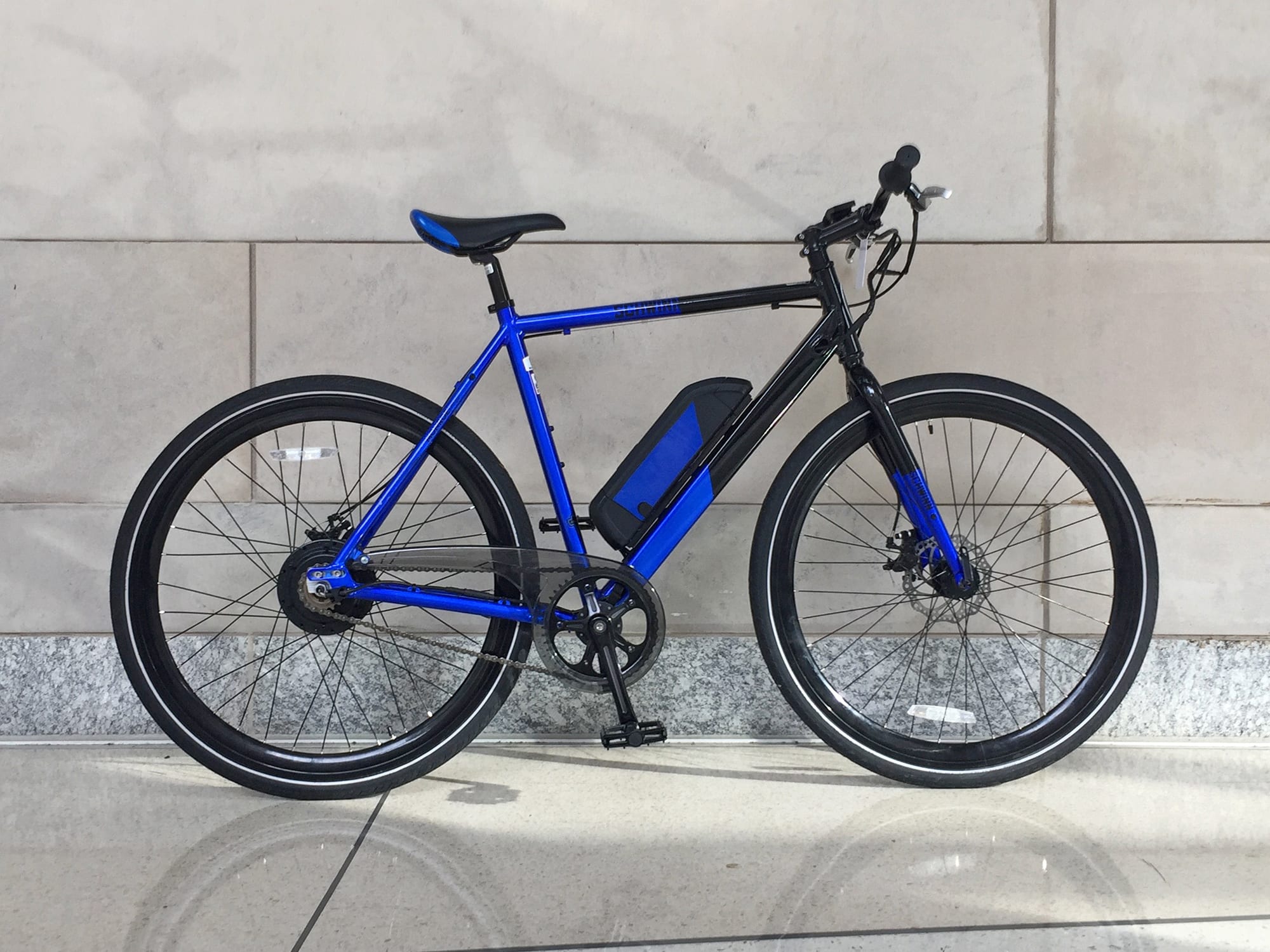
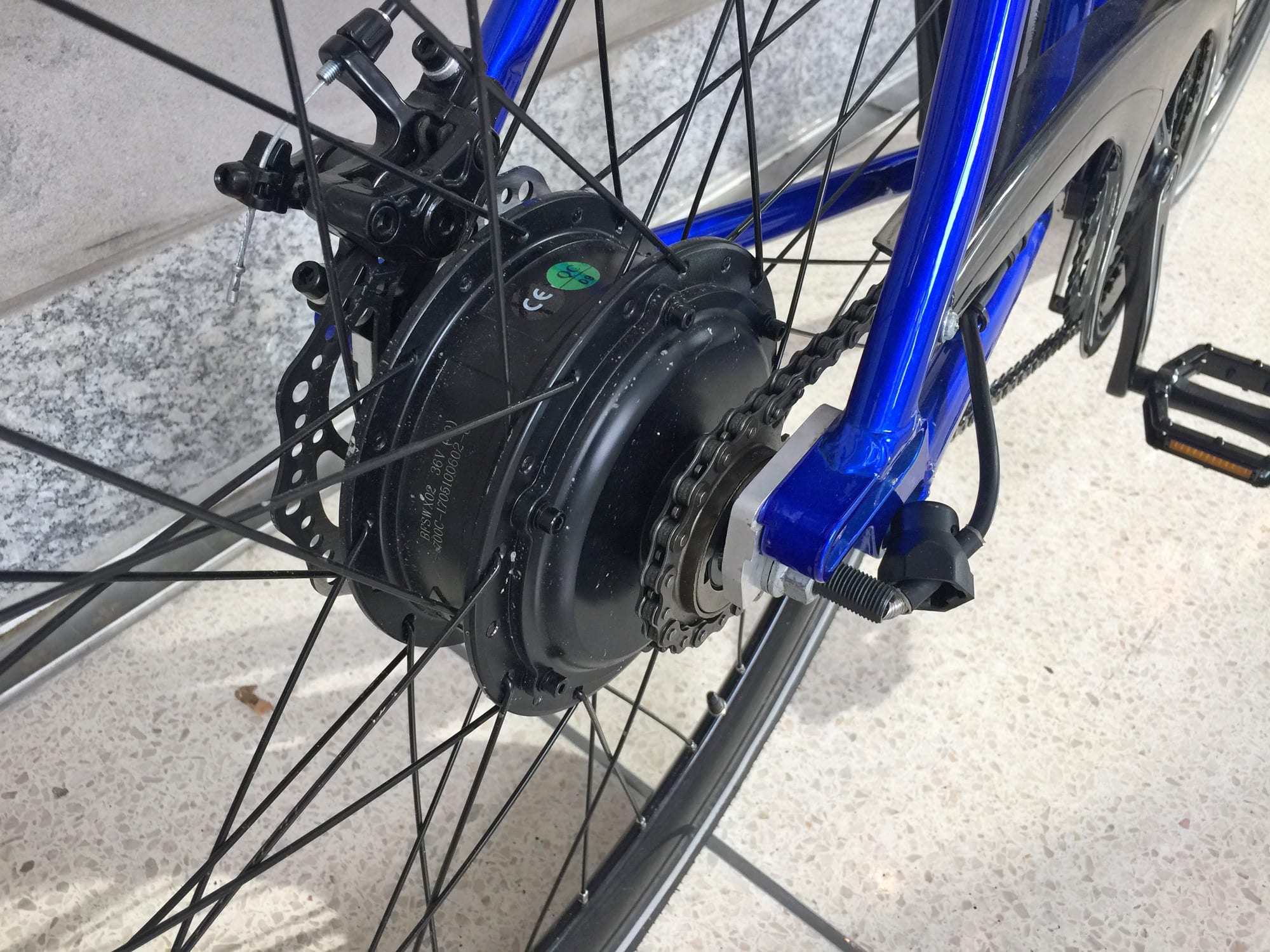
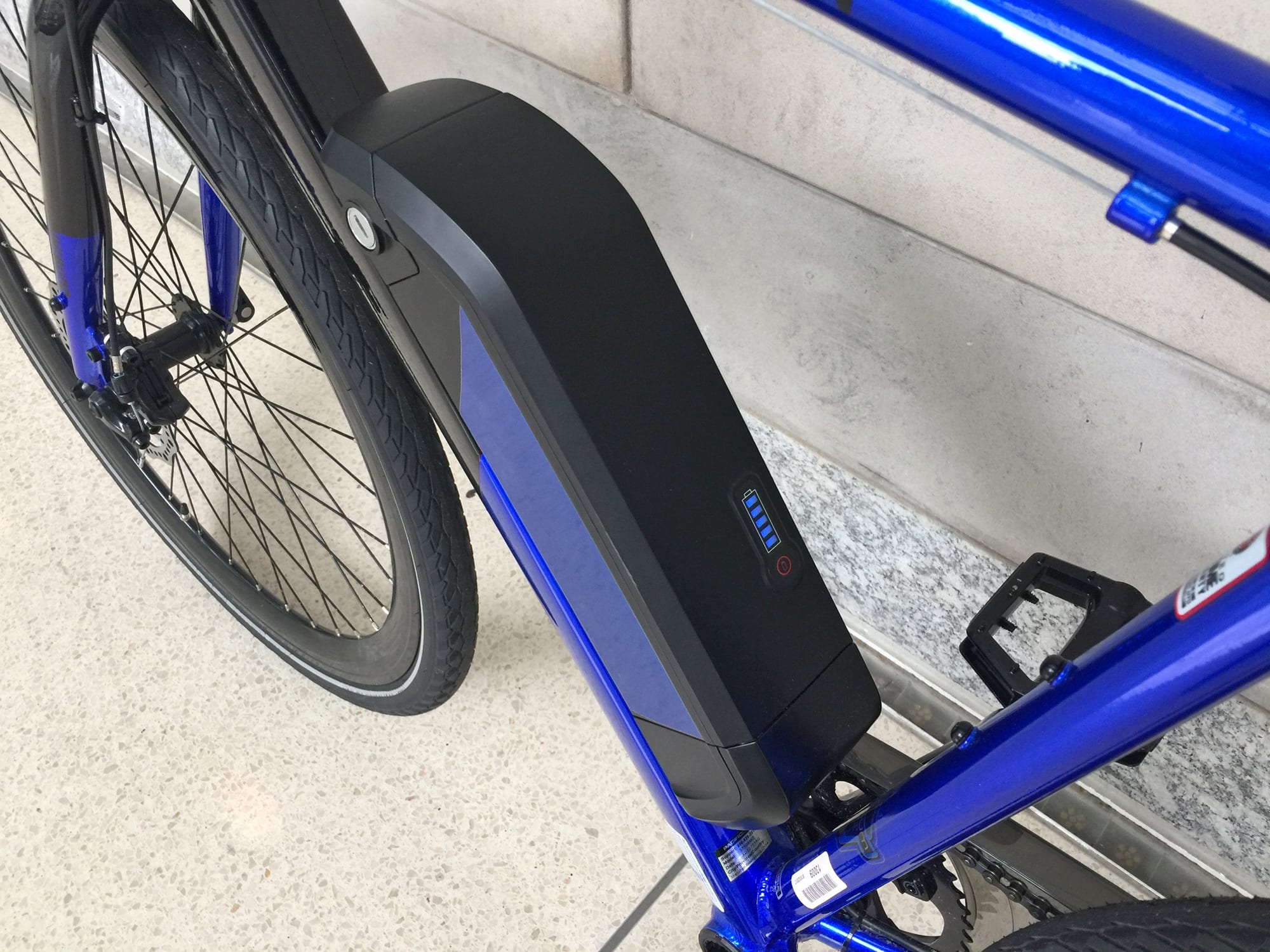
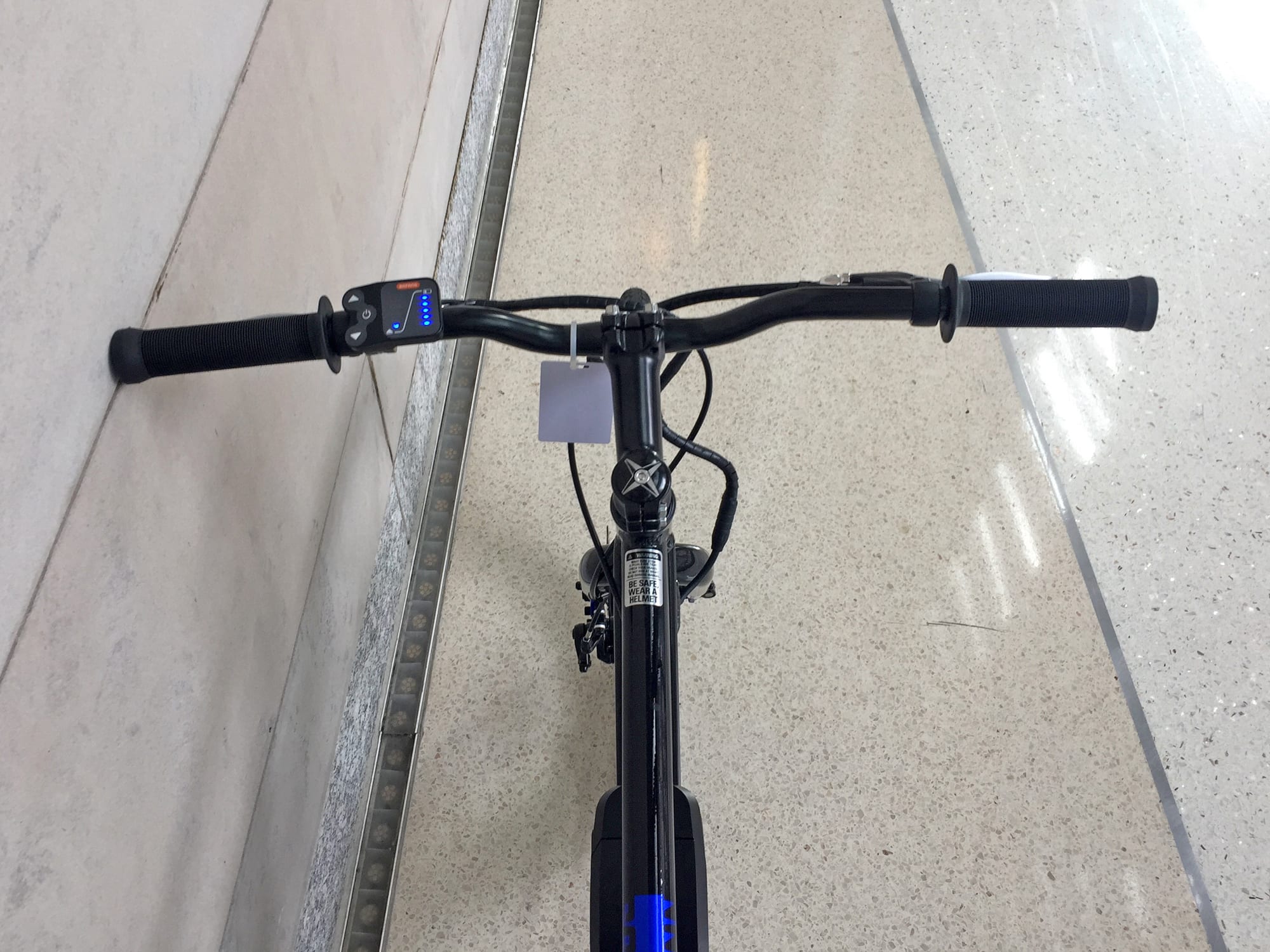
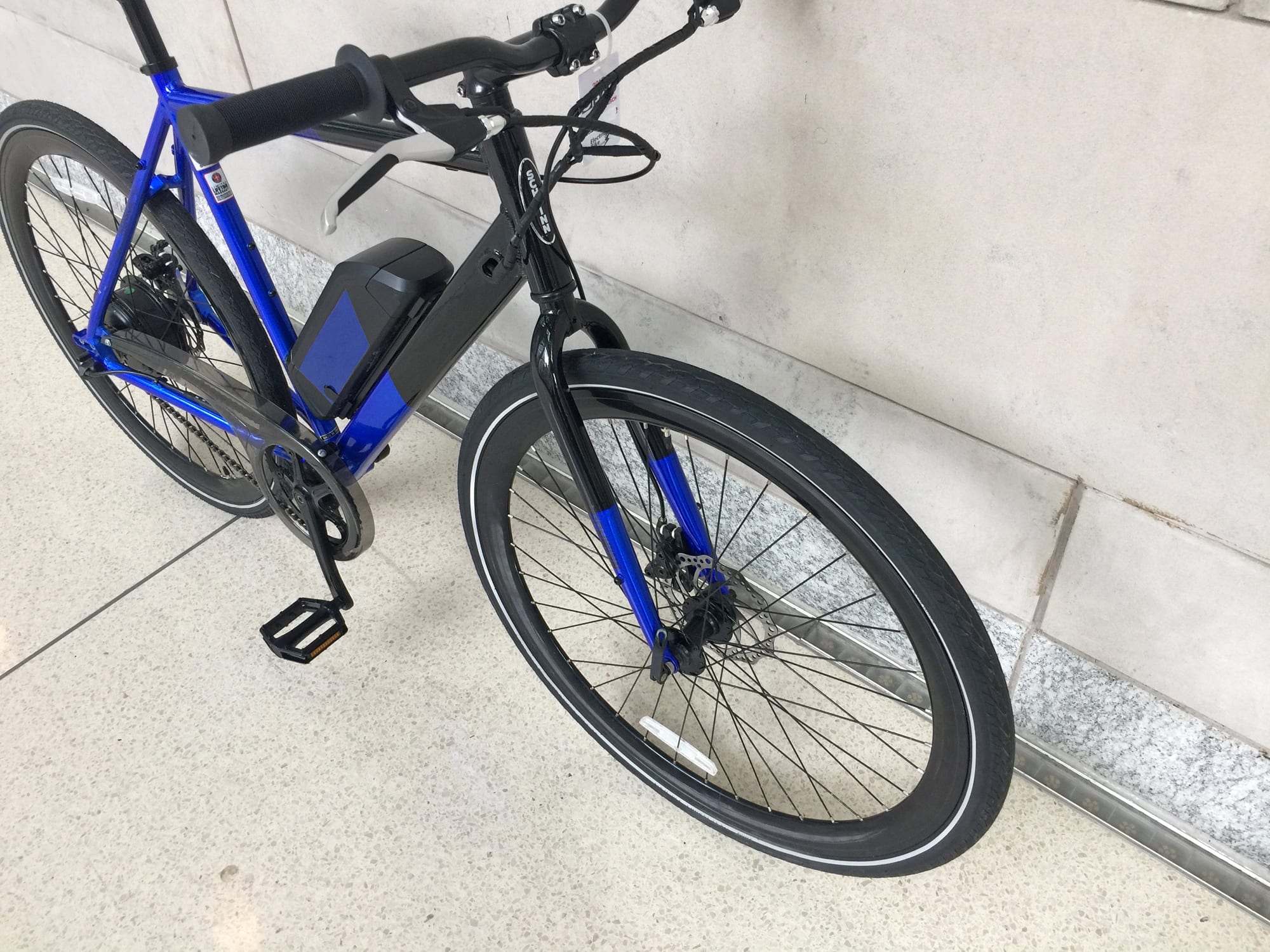
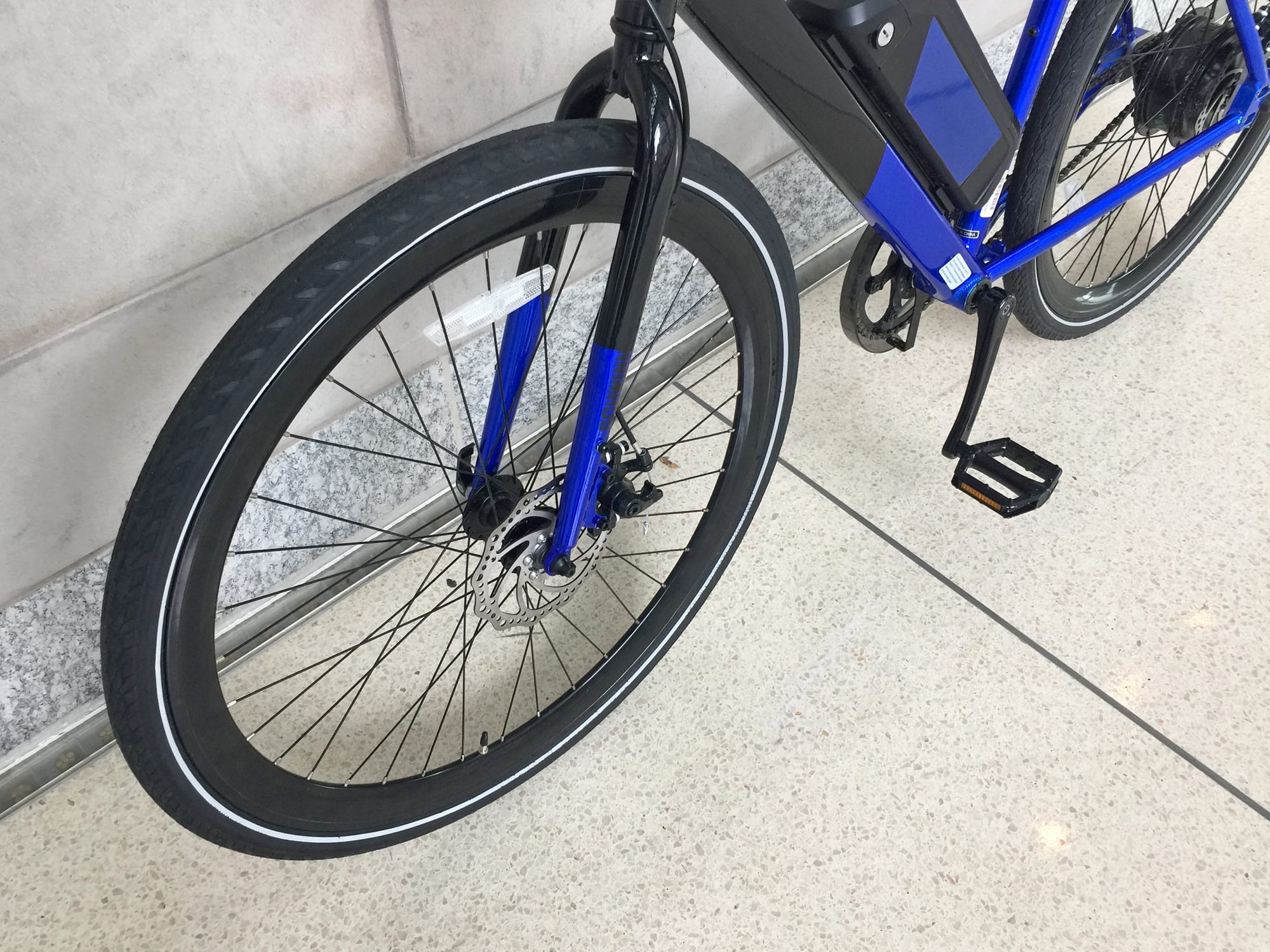
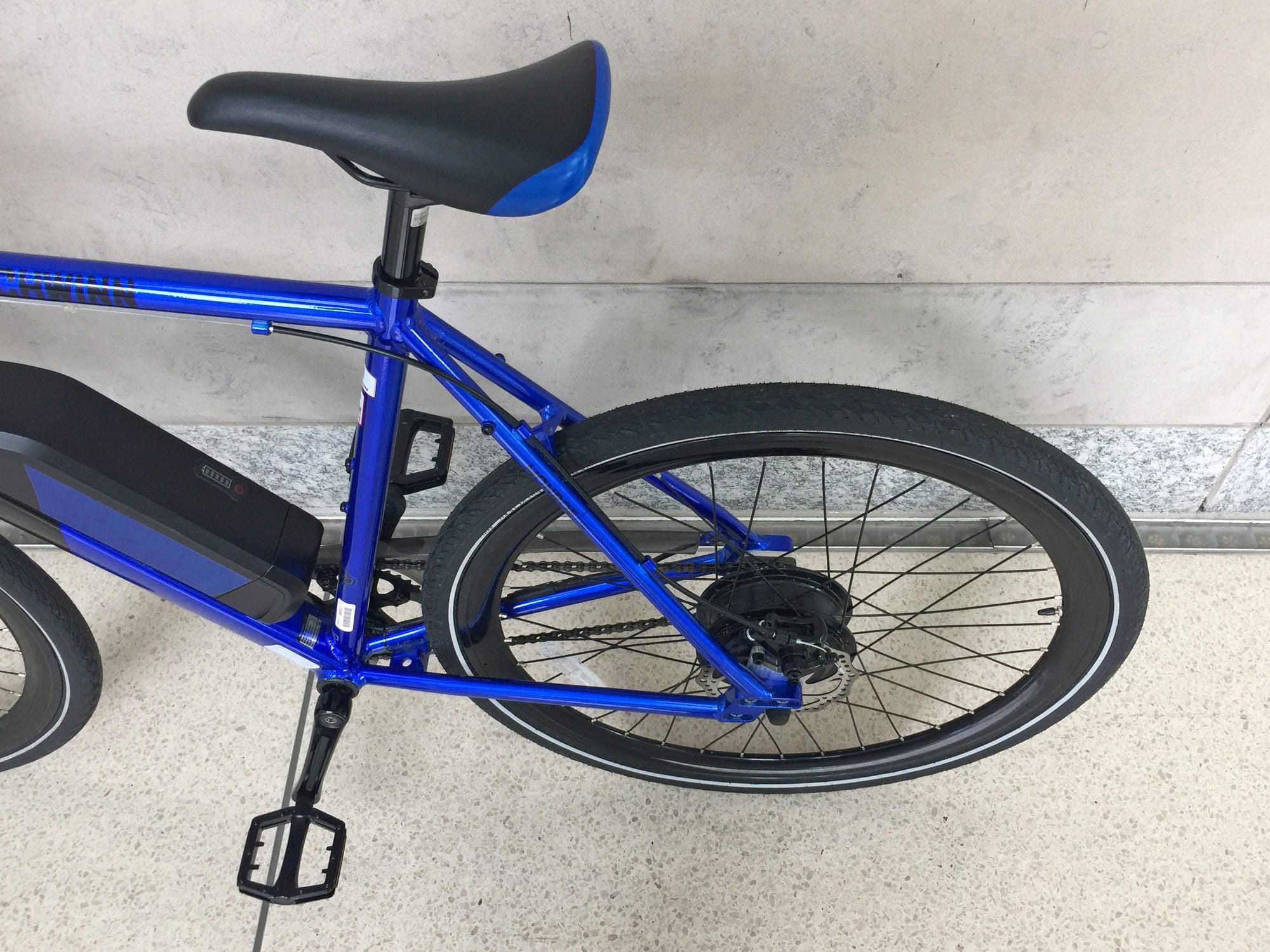
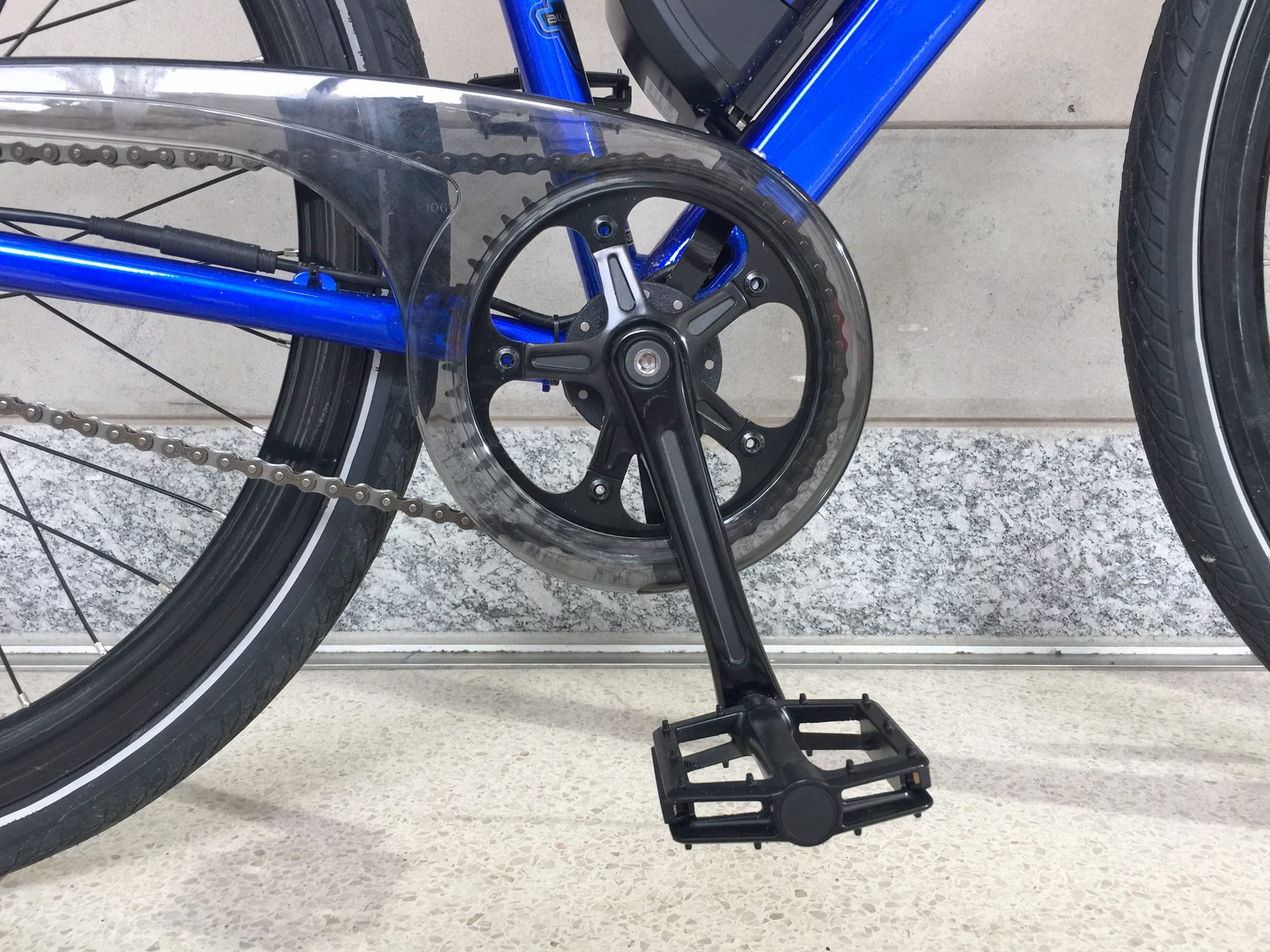
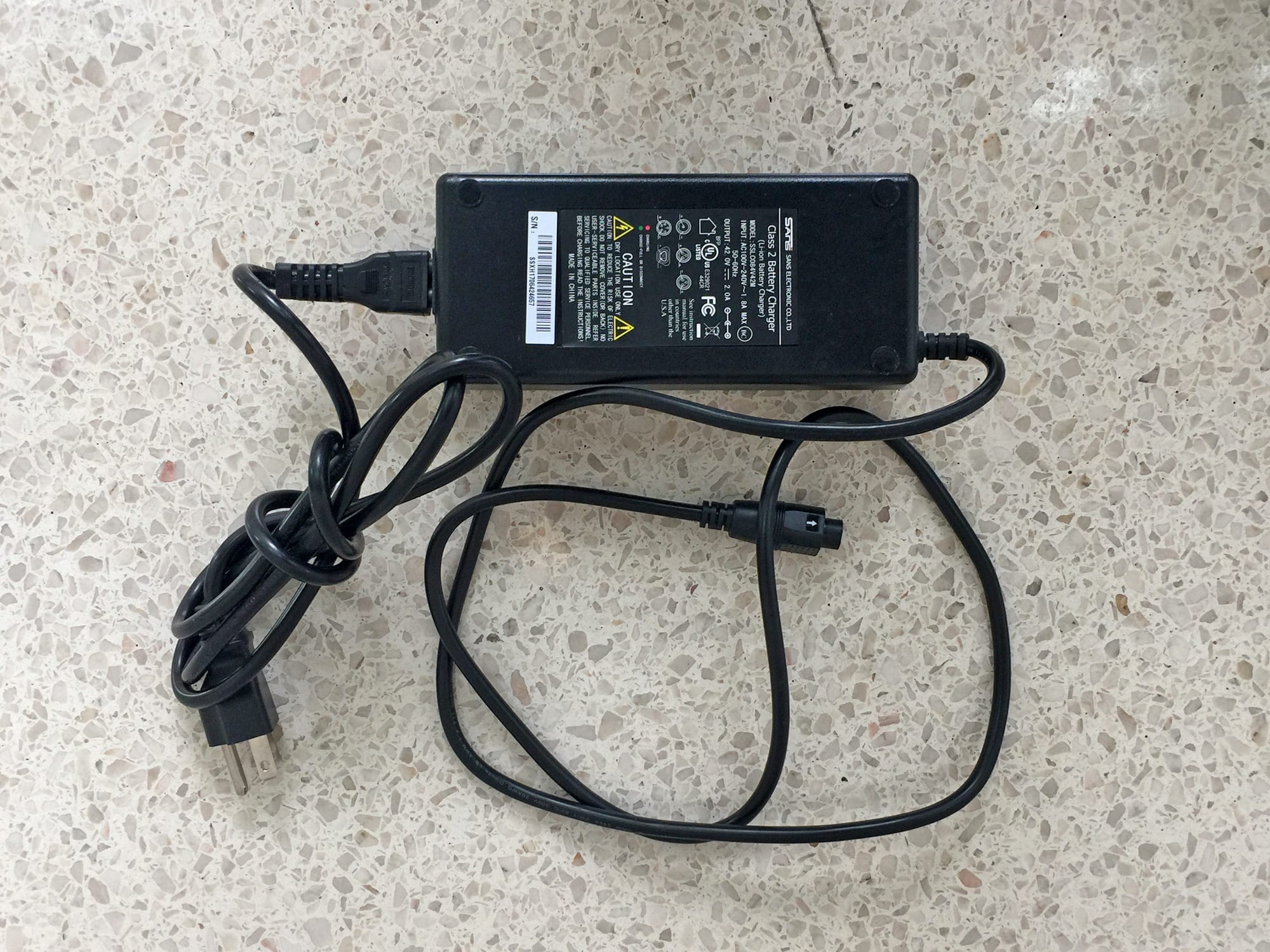

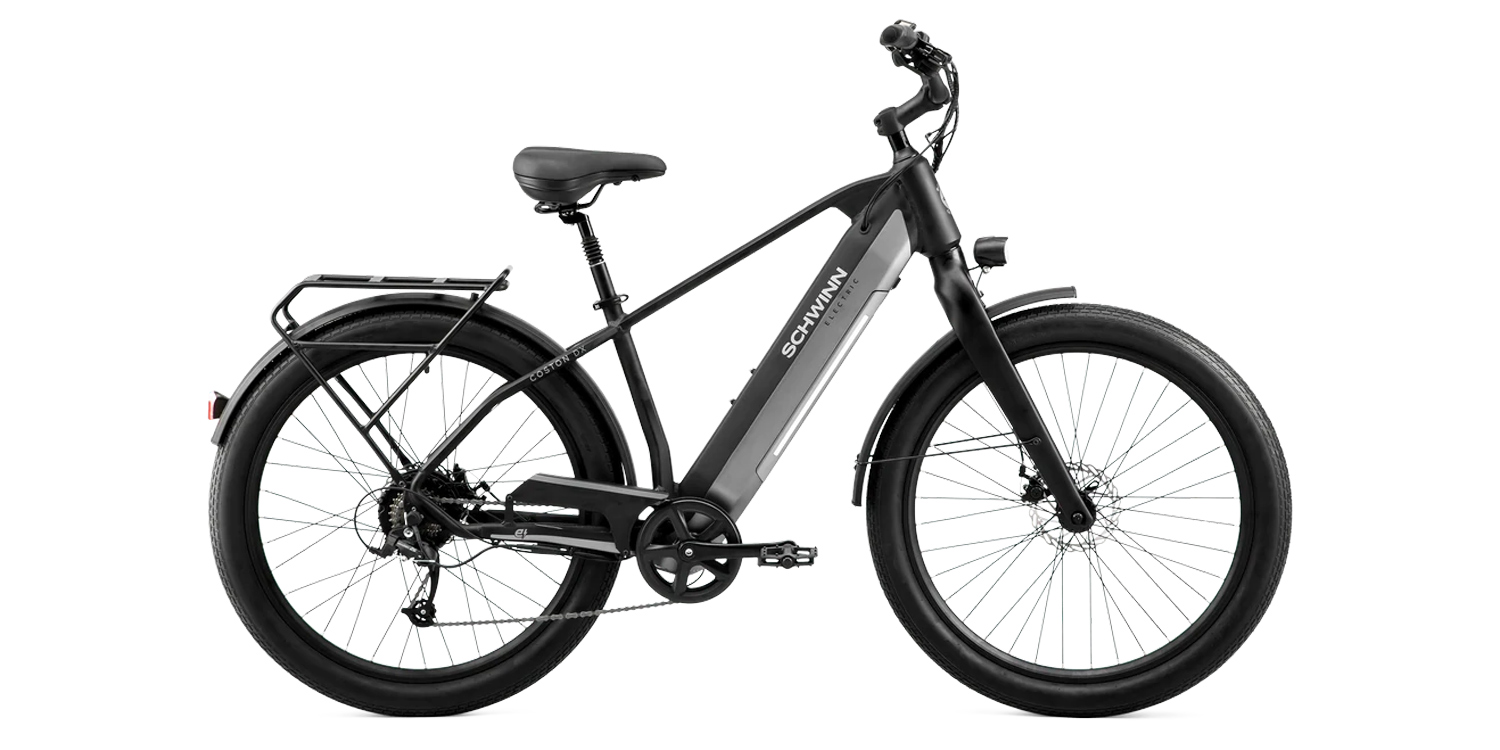
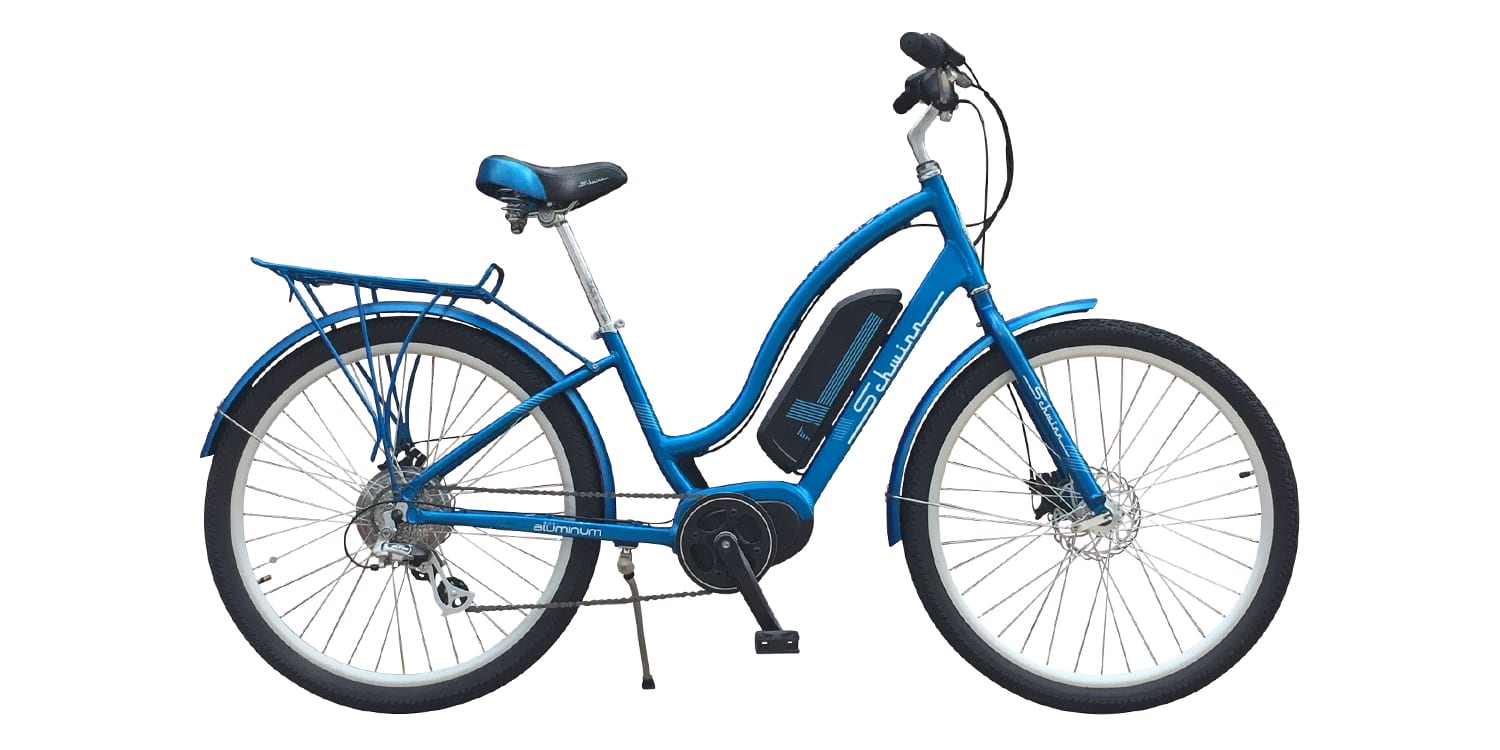

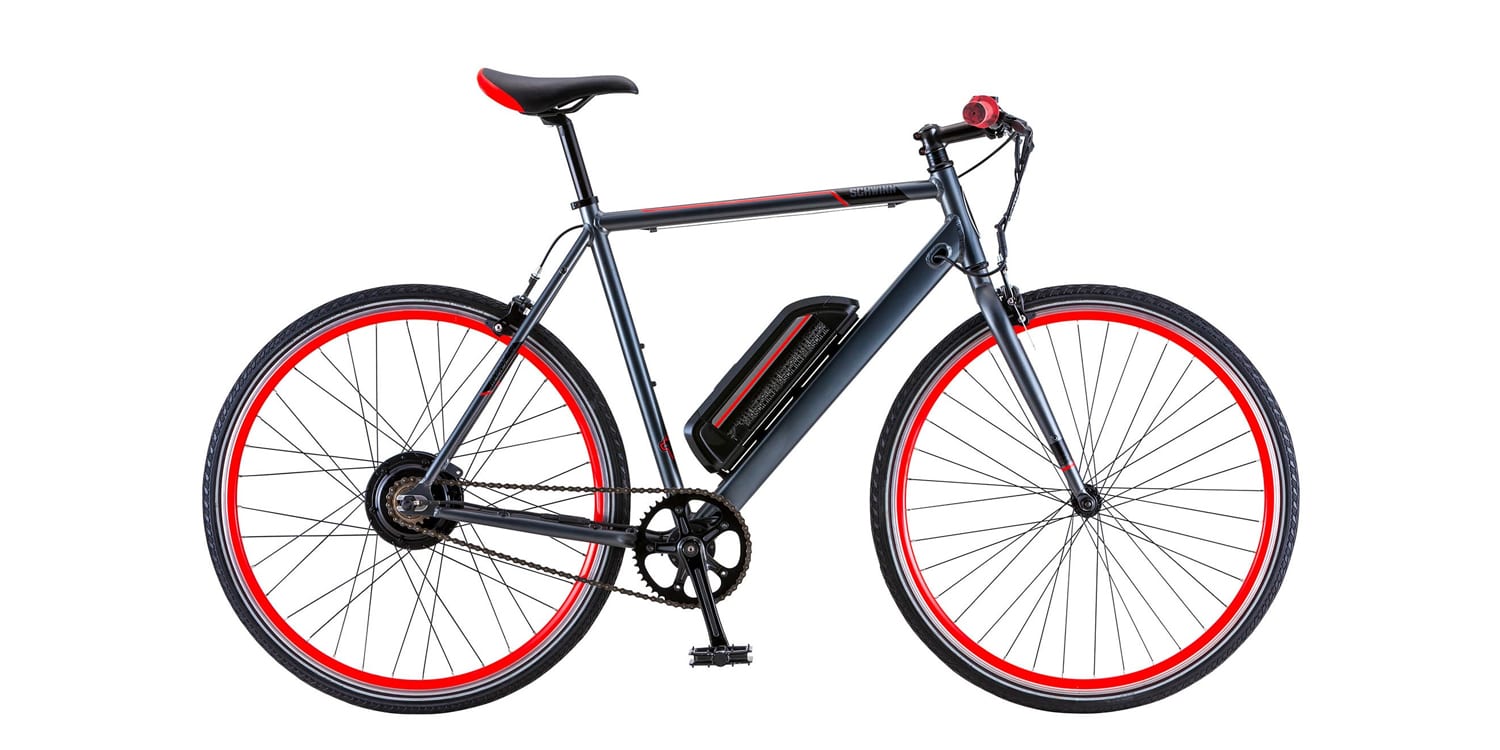
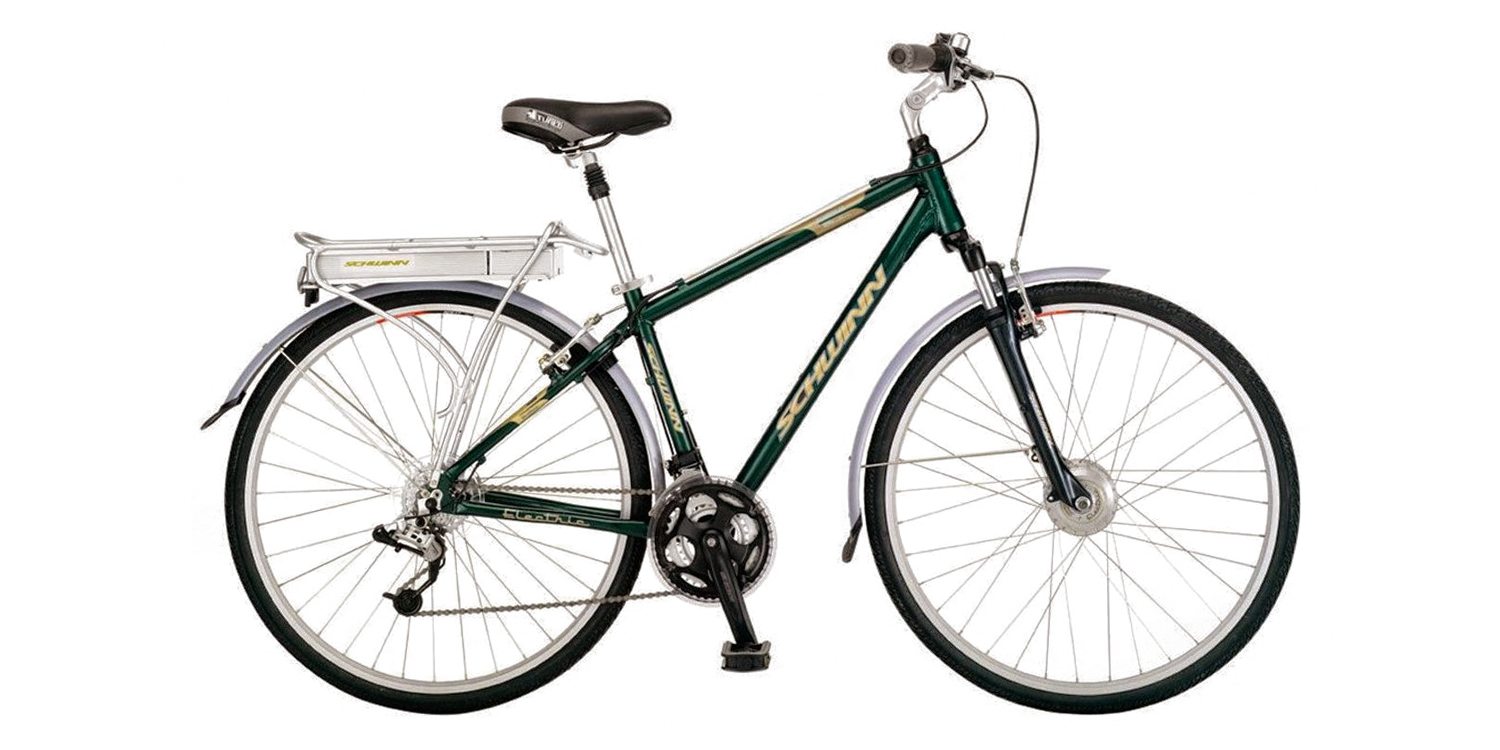
monroe350 says
Nice review, I agree with most of what you said. I recently bought this bike on sale for $1000. This bike lacks alot of features to be worth $1500 but at $1000 with a 2 year warranty. It is another story.
I have some minor disagreements with the review. I did not find the LED lights to be that annoying. My bike did not come with a quick release for the front wheel and I had no bottle cage mounts on the frame for things like a water bottle.
I had the box delivered to my house and the bike was packed unassembled, but the packaging was very good not a scratch on the bike. The assembly instructions that came with the bike were awful. The pictures were for a totally different style bike and referred to a multi-speed bike. The assembly was pretty straight forward if you have put together a kid’s bike before. You had reverse the front fork. Install the handlebars. Install the front tire. Install the seat post. All electrical wiring was already done. I spent the most time getting the mechanical disc brakes setup. I have never used disc brakes before. Once I charged the battery the bike started up first try.
Not having a kickstand was very annoying and the seat was very uncomfortable, but I have never bought a bike where I did not replace the seat. My biggest real complaint would be the lack of attachment points. It is hard to find a rear bike rack that fits this bike and the same goes for fenders. I thought having such a basic electric display would annoy me, but I kind of like it. It gives you more room on the handle bars to mount my phone and a bike radio. It does much better on hills than I expected but if you live in a mountainous area I would stay away from almost any single speed bike. Battery was secure but very easy to take on and off. I would guess my range around 25 miles on max assist. I weight 175 lbs.
The bike motor is almost silent and smooth. The lack of suspension on the bike makes for a rough ride when you get close to 20 mph. I briefly use a bike computer to track speed and found it was definitely capable of 20 mph with the motor. The bike is balanced pretty well and still feels like a bike. The motor had no problem going up long 10% grade hills. If you were someone with a disability I am not sure I would recommend this bike, you still have to put in some effort. Unlike some ebikes this bike is actually ridable when the motor is turned off and the bike can actually coast.
Court says
Hey! I really enjoyed reading your comment, thanks for taking the time here. It sounds like the bike is performing well for you, even though it doesn’t have as many attachment points. Thanks for describing it so well and also how you like the basic display and being able to ride unassisted. I hope it holds up well for you over time and am happy to hear that you got a good deal on it!
Dean says
But still, why no rear derailleur? On a trail I’m usually switching between a couple of gears (non- electric) on the way up, then on the way down going for high gear. Now an electric may eliminate that some, but still it seems like a rear 7 or 8 speed option would sell more bikes, in my opinion.
Lenny says
I’m 5’6” height and ordered a small frame. Will I have difficulty mounting the bike? Or it’s to high for me to mount. Thanks for your answer in advance.
Court says
Hmm, I guess it depends on your inseam length and also your leg and hip flexibility. This ebike is light and affordable, but the traditional high-step diamond frame is going to be a little less approachable. I’m 5’9″ and had no issues with the demo bike in the video. You can always hang one leg over the top tube vs. standing on both sides. This is what kids do a lot when starting to learn how to ride on their older siblings’ bicycles ;)